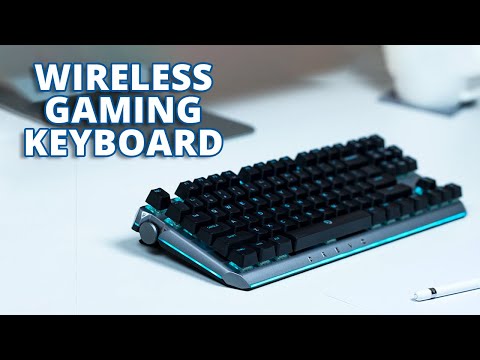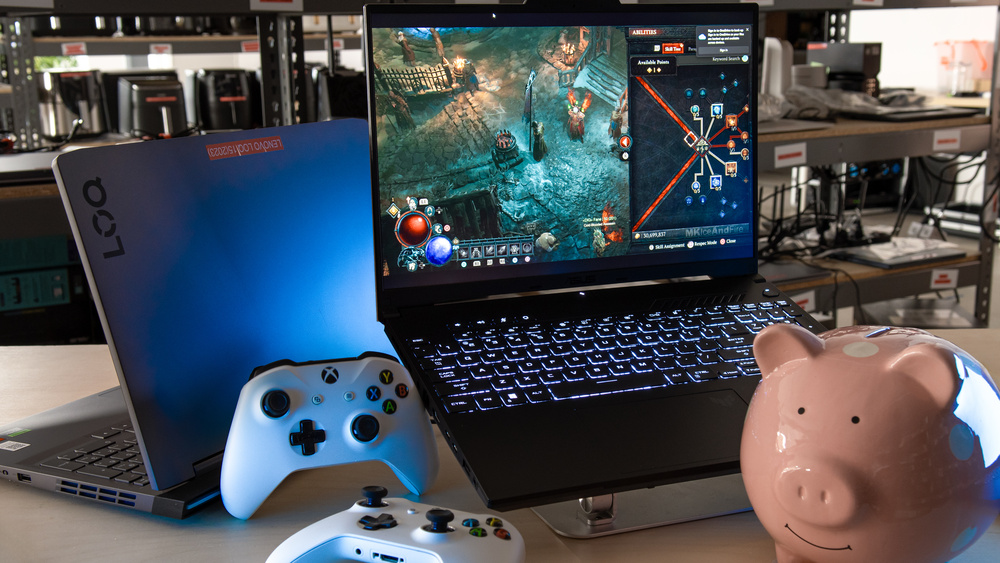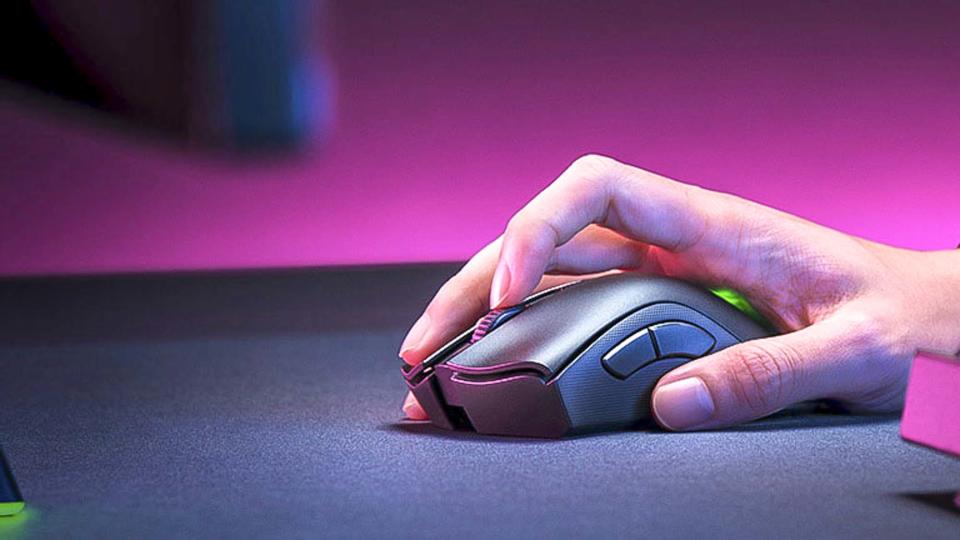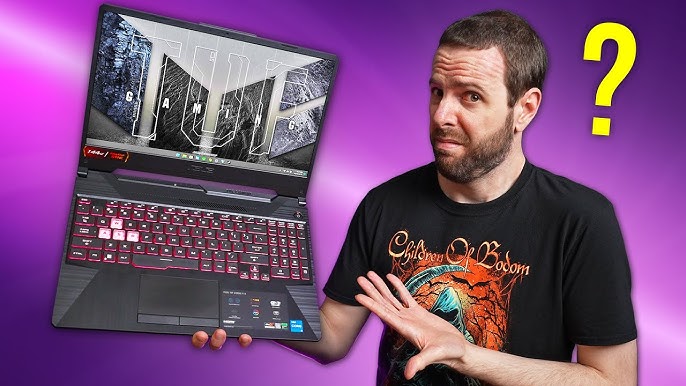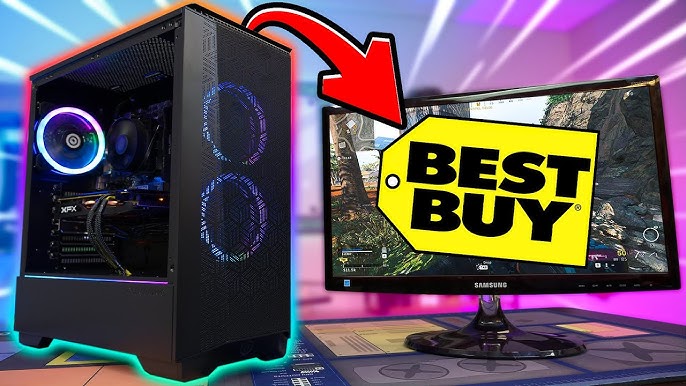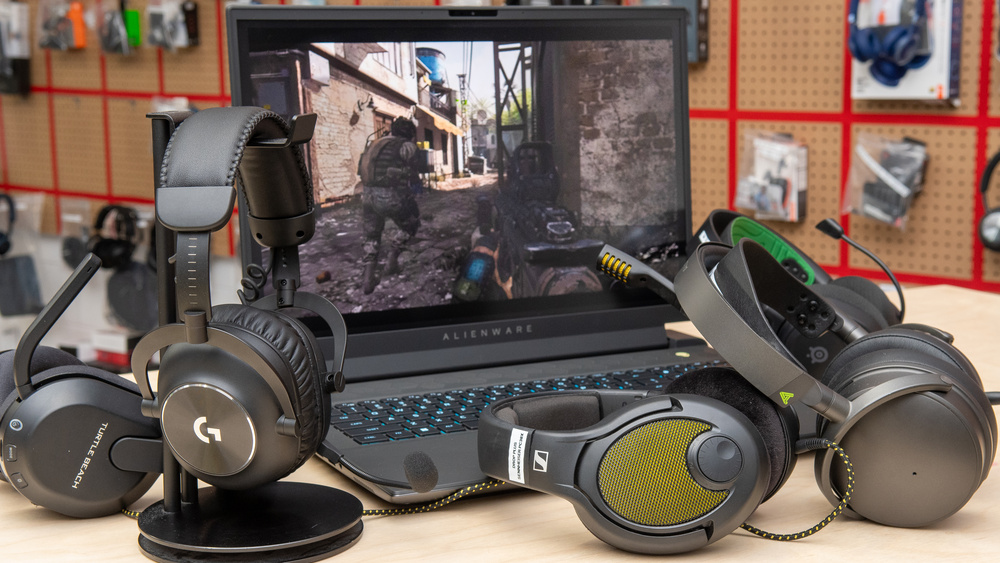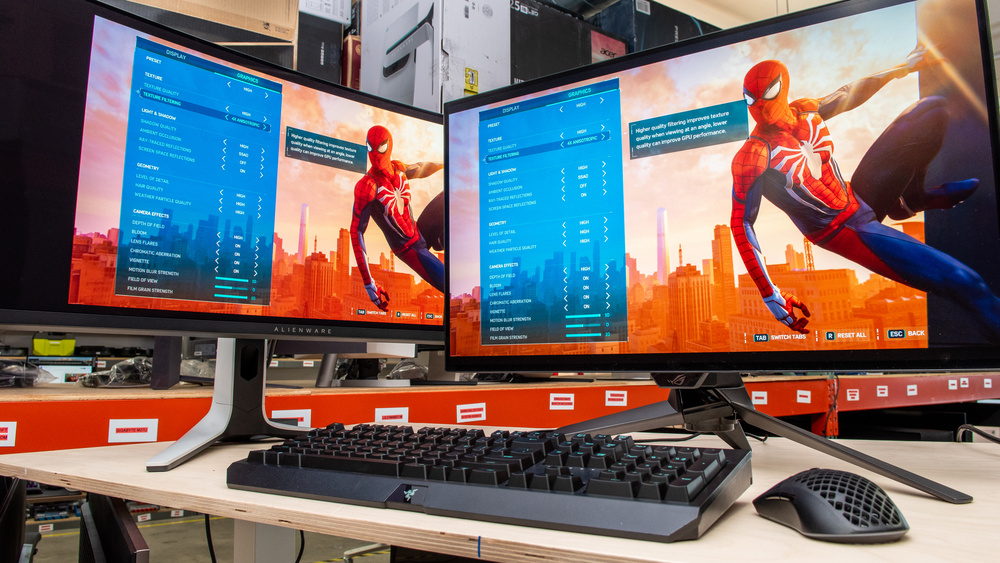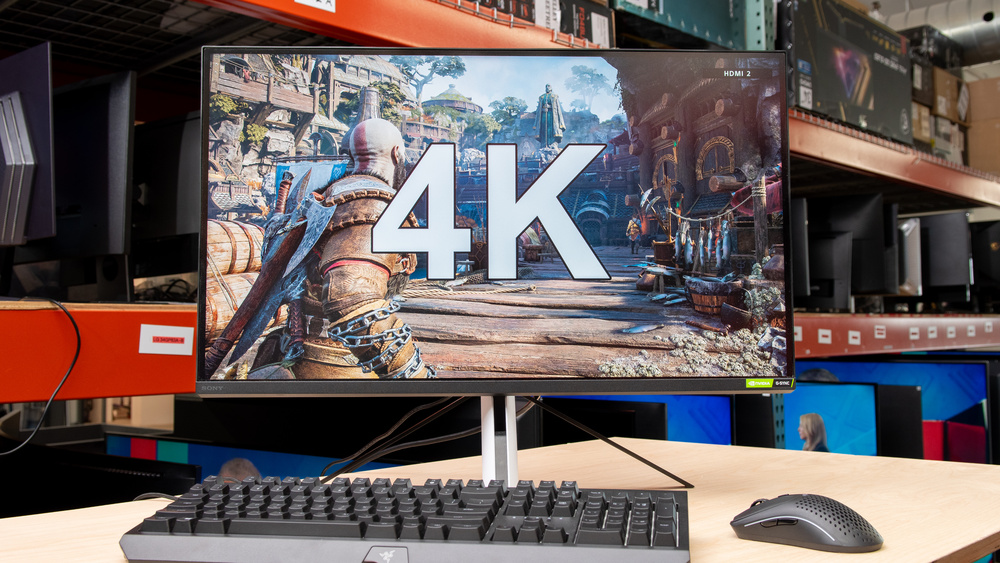Best Graphics Card for Gaming: Top 10 GPUs in 2025
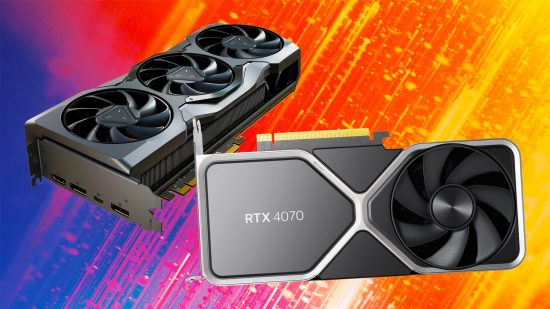
If you’re battling stutters at 4K or can’t hit 144 FPS in competitive titles, it’s time for a GPU upgrade. The best graphics card for gaming PC delivers the horsepower you need—whether you crave ultra‑realistic ray tracing, buttery‑smooth high‑FPS action, or the best value per dollar.
In this guide, we unveil the 10 best graphics cards for gaming, from NVIDIA’s cutting‑edge RTX 50‑series flagships to AMD and Intel’s surprise contenders. We’ll spotlight the best graphics card for 4K gaming, budget picks, and answer “what’s the best gaming graphics card today.” Read on to power up your rig!
10 Best Graphics Card for Gaming Enthusiasts
You’ve seen how next‑gen GPUs redefine performance—now let’s break down the ten standout cards that cater to every budget and resolution. From the unrivaled power of the RTX 5090 to value champions under $400, discover which GPU will transform your gaming rig.
1. NVIDIA GeForce RTX 5090
NVIDIA’s new flagship RTX 5090 crushes 4K gaming with an average 98 FPS at max settings—thanks to Blackwell architecture, GDDR7 memory, and DLSS 4.0 multi‑frame generation. If budget is no object, it’s the best graphics card for gaming today.
Features:
-
Blackwell GPU, 4th‑gen RT cores, 5th‑gen Tensor cores, 30 Gbps GDDR7 memory
-
PCIe 5.0, HDMI 2.1a, DisplayPort 2.1b
-
DLSS 4.0 with multi‑frame generation; Reflex 2 latency tech
Pros & Cons:
-
Pros: Unmatched 4K performance; advanced AI upscaling; future‑proof I/O
-
Cons: $3,999 MSRP; 394 W power draw; scarce at MSRP
2. NVIDIA GeForce RTX 5080
The RTX 5080 delivers 64 FPS average at 4K and 105 FPS at 1440p—offering flagship‑level ray tracing at a (relative) $1,400 MSRP. It’s the best graphics card for 4K gaming if you want top‑tier performance without the 5090’s price tag.
Features:
-
Ada Lovelace architecture; 64 GB GDDR7; 253 W TDP
-
DLSS 4.0, Reflex 2, AV1 UHQ decode
Pros & Cons:
-
Pros: Excellent 4K/1440p balance; strong ray tracing; advanced codec support
-
Cons: $1,400 MSRP; 253 W TDP; still pricey for many
3. NVIDIA GeForce RTX 5070 Ti
For roughly $960, the RTX 5070 Ti delivers 56 FPS at 4K and 94 FPS at 1440p—making it the best gaming graphics card in the sub‑$1,000 tier. It balances power draw (259 W) with premium features like DLSS 4.0.
Features:
-
Ada Lovelace GPU; 8 GB GDDR7; 259 W
-
DLSS 4.0, 4th‑gen RT cores, AV1 encode/decode
Pros & Cons:
-
Pros: Strong value; future‑proof features; solid overclocking headroom
-
Cons: 8 GB VRAM can limit future 4K; high power draw
4. AMD Radeon RX 9070 XT
AMD’s RX 9070 XT hits 55 FPS at 4K and 90 FPS at 1440p for around $850, leveraging RDNA 3 efficiency and 6 GB of Infinity Cache. It’s the best graphics cards for gaming if you favor AMD’s Radeon‑boosted features.
Features:
-
RDNA 3 architecture; 16 GB GDDR6; 280 W
-
FSR 3 upscaling; AV1 encode support; Radeon Super Resolution
Pros & Cons:
-
Pros: Competitive price; robust raster performance; open‑source upscaling
-
Cons: Ray tracing lags NVIDIA; 280 W TDP; higher temps
5. AMD Radeon RX 9070
The RX 9070 offers 47 FPS at 4K and 80 FPS at 1440p for ~$670, making it a strong best graphic card for gaming PC pick under $700. It features 12 GB GDDR6 and Smart Access Memory for Ryzen boosts.
Features:
-
12 GB GDDR6; 215 W; RDNA 3
-
FSR 3, SAM support; AV1 decode
Pros & Cons:
-
Pros: Great midrange value; ample VRAM; good overclocking
-
Cons: Modest ray tracing; less efficient than NVIDIA; 215 W
6. NVIDIA GeForce RTX 5070
At $600 MSRP, the RTX 5070 delivers 43 FPS at 4K and 75 FPS at 1440p—ideal for 1440p enthusiasts on a budget and featuring DLSS 4.0 as the best pc gaming graphics card under $700.
Features:
-
8 GB GDDR7; 220 W; Ada Lovelace
-
DLSS 4.0, Reflex 2, AV1 decode
Pros & Cons:
-
Pros: Affordable DLSS 4; solid 1440p; decent power efficiency
-
Cons: 8 GB VRAM limits future high‑res; no AV1 encode
7. Intel Arc B580
Intel’s Arc B580 entry‑level GPU delivers 23 FPS at 4K and 41 FPS at 1440p for ~$341—making it the best budget graphics card for gaming if you need basic acceleration and AV1 encoding on a tight budget.
Features:
-
8 GB GDDR6; 152 W; Xe‑HPG architecture
-
AV1 full encode/decode; XeSS upscaling
Pros & Cons:
-
Pros: AV1 support; hardware encode; competitive price
-
Cons: Driver maturity; lower fps; 152 W TDP
8. NVIDIA GeForce RTX 4060
The RTX 4060 at $320 delivers 16 FPS at 4K and 37 FPS at 1440p, excelling in 1080p high‑FPS play—earning its spot as the best graphics card for gaming PC under $350.
Features:
-
8 GB GDDR6; 123 W; Ada Lovelace
-
DLSS 3, Reflex, AV1 decode
Pros & Cons:
-
Pros: Low power; strong 1080p; DLSS 3 framegen
-
Cons: Limited 4K; 8 GB VRAM; no DLSS 4
9. AMD Radeon RX 7600
AMD’s RX 7600 offers 16 FPS at 4K and 37 FPS at 1440p for $338—making it a contender for the best gaming graphics card under $350 with 8 GB GDDR6 and FSR 3 support.
Features:
-
8 GB GDDR6; 165 W; RDNA 3
-
FSR 3, Radeon Anti‑Lag
Pros & Cons:
-
Pros: Good 1080p; AMD feature set; sub‑$350
-
Cons: Weak 4K; 8 GB VRAM; higher power
10. Intel Arc B570
The Arc B570 at $329 delivers 23 FPS at 4K and 65 FPS at 1080p, combining hardware AV1 encode and XeSS upscaling—another best budget graphics card for gaming option from Intel.
Features:
-
8 GB GDDR6; 150 W; Xe‑HPG
-
AV1 encode/decode; XeSS
Pros & Cons:
-
Pros: Hardware AV1; competitive fps at 1080p
-
Cons: Driver polish; limited 4K; 150 W
If you're seeking a gaming laptop that delivers solid performance without breaking the bank, you're in luck. The market in 2025 offers a range of budget-friendly options that don't compromise on quality. Whether you're into fast-paced esports or immersive AAA titles, these laptops provide the power you need at a price you can afford.
| Name | Core Features | Pros & Cons | Best For |
| NVIDIA RTX 5090 | - Blackwell GPU, GDDR7 - DLSS 4.0, Reflex 2 - 30Gbps memory - PCIe 5.0 |
✅ Unmatched 4K performance ❌ $3,999 price, 394W TDP |
Extreme 4K gaming, future-proofing |
| NVIDIA RTX 5080 | - Ada Lovelace, 64GB GDDR7 - DLSS 4.0, AV1 decode - 253W TDP |
✅ Excellent 4K/1440p balance ❌ $1,400 price |
High-end 4K gaming, content creators |
| NVIDIA RTX 5070 Ti | - 8GB GDDR7, 259W - DLSS 4.0, 4th-gen RT - AV1 encode/decode |
✅ Strong sub-$1K value ❌ 8GB VRAM limit |
1440p gaming, budget-conscious enthusiasts |
| AMD RX 9070 XT | - RDNA 3, 16GB GDDR6 - FSR 3, Infinity Cache - 280W TDP |
✅ Competitive price ❌ Weak ray tracing |
AMD fans, 1440p gaming |
| AMD RX 9070 | - 12GB GDDR6, 215W - FSR 3, SAM support - RDNA 3 |
✅ Great midrange value ❌ Modest ray tracing |
Budget 1440p, Ryzen system owners |
| NVIDIA RTX 5070 | - 8GB GDDR7, 220W - DLSS 4.0, Reflex 2 - AV1 decode |
✅ Affordable DLSS 4 ❌ Limited VRAM |
1440p budget gaming |
| Intel Arc B580 | - 8GB GDDR6, 152W - AV1 encode/decode - XeSS upscaling |
✅ Budget AV1 support ❌ Driver maturity |
Budget builds, AV1 content creation |
| NVIDIA RTX 4060 | - 8GB GDDR6, 123W - DLSS 3, AV1 decode - Ada Lovelace |
✅ Efficient 1080p ❌ No DLSS 4 |
1080p high-FPS gaming |
| AMD RX 7600 | - 8GB GDDR6, 165W - FSR 3, Anti-Lag - RDNA 3 |
✅ Good 1080p value ❌ High power draw |
Budget 1080p gaming |
| Intel Arc B570 | - 8GB GDDR6, 150W - AV1 encode/decode - XeSS |
✅ Hardware AV1 ❌ Driver issues |
Entry-level gaming, AV1 streaming |
Key Takeaways:
-
4K Elite: RTX 5090 (unlimited budget), RTX 5080 (balanced flagship)
-
1440p Sweet Spot: RTX 5070 Ti (NVIDIA), RX 9070 XT (AMD)
-
Budget 1440p: RTX 5070, RX 9070
-
1080p Gaming: RTX 4060, RX 7600
-
Budget/AV1: Intel Arc B580/B570
Performance Tiers:
-
4K Dominance: RTX 5090/5080
-
1440p Premium: RTX 5070 Ti, RX 9070 XT
-
1440p Budget: RTX 5070, RX 9070
-
1080p Value: RTX 4060, RX 7600
-
Entry-Level: Intel Arc B580/B570
Key Factors to Consider When Selecting the Best Graphics Card for Gaming
You’ve seen which GPUs lead the pack in raw benchmarks and value—but specs alone don’t tell the full story. Next, we’ll unpack the critical technical pillars—architecture, memory, power, and more—that determine how a card performs in real‑world gaming, so you can make an informed choice.
-
GPU Architecture & Features
Newer architectures (Blackwell, Ada Lovelace, RDNA 3) bring faster ray tracing, AI upscaling (DLSS 4, FSR 3), and efficiency. -
Memory & Bandwidth
8 GB minimum for 1080p/1440p; 12–16 GB for 4K. GDDR7 > GDDR6 for future‑proof bandwidth. -
Performance Tier
Match card to resolution: RTX 4060/7600 for 1080p; RTX 5070/9070 for 1440p; RTX 5080+ for 4K . -
Power & Cooling
Check TDP (123–394 W) and ensure PSU/headroom. Consider aftermarket coolers for thermal headroom . -
Connectivity & Codec Support
HDMI 2.1/DP 2.1 for high‑res high‑Hz. AV1 encode/decode is invaluable for streaming/recording. -
Price & Availability
MSRP vs. street price—avoid paying huge markups. Consider last‑gen if the 50‑series is out of reach .
Conclusion
Whether you demand the unrivaled 4K might of the RTX 5090, the value‑driven RTX 5070 Ti, or the budget‑friendly Arc B580, there’s a best graphics card for gaming at every pricepoint. We’ve broken down performance, features, and trade‑offs so you can choose the perfect GPU for your resolution, budget, and feature needs.
Ready to upgrade? Click through to secure your ideal card and transform your gaming experience today!
FAQs
-
What is the best graphics card for gaming?
The NVIDIA GeForce RTX 5090 currently leads for 4K gaming, thanks to Blackwell architecture and DLSS 4.0 multi‑frame generation.
-
Which graphics card is best for 4K gaming?
RTX 5080 offers the best balance of 4K performance (64 FPS avg) vs. cost; the RTX 5090 is the ultimate if budget allows. You might need a 4K gaming monitor for better gaming experience, read on to take the best pick.
-
What’s the best gaming graphics card today?
Today’s top pick is the RTX 5090 for sheer performance; the RTX 5080 is the top value for 4K enthusiasts.
-
Which is the best budget graphics card for a gaming PC?
The Intel Arc B580 (≈$340) and RTX 4060 (≈$320) are the best sub‑$350 options for 1080p and light 1440p gaming.
-
How do I choose the best graphics card for my PC?
Match card performance to your target resolution/FPS, ensure your PSU and case can support the TDP and size, and look for features like DLSS/FSR and AV1 support.
